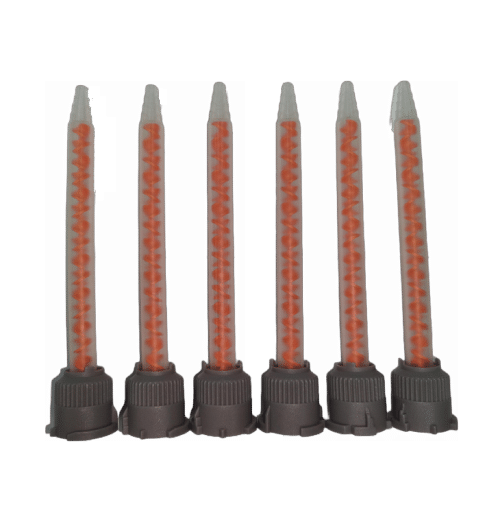Epoxy resin is a popular material known for its versatility and strength. It finds extensive use in various industries, including construction, art, and electronics. When working with epoxy resin, encountering bubbles during the application process can be frustrating and impact the final result. In this article, we delve into the causes of bubbles when using epoxy resin nozzles and explore ways to mitigate this issue.
Air Entrapment:
One common cause of bubbles in epoxy resin is the entrapment of air during the dispensing process. Air can get trapped within the resin as it flows through the nozzle, resulting in the formation of bubbles. This can happen due to improper mixing or excessive turbulence during dispensing.
Solution:
To reduce air entrapment, it is crucial to mix the epoxy resin thoroughly and follow the manufacturer’s instructions for the correct mixing technique. Additionally, dispensing the resin in a controlled manner with steady pressure and avoiding abrupt movements can minimize the introduction of air into the resin stream.
Viscosity and Degassing:

The viscosity of epoxy resin can influence the occurrence of bubbles. If the resin viscosity is too high, it may impede the escape of air bubbles during the dispensing process. High-viscosity resin may require additional measures to ensure effective degassing before application.
Solution:
To address this, it is advisable to degas the epoxy resin prior to dispensing. Degassing involves subjecting the mixed resin to a vacuum environment to remove trapped air bubbles. This process helps to lower the resin’s overall viscosity and promotes the release of air pockets, reducing the likelihood of bubble formation.
Moisture Contamination:
Moisture contamination is another factor that can contribute to the formation of bubbles in epoxy resin. Moisture can enter the resin during storage, mixing, or through inadequate sealing of the resin container. When exposed to moisture, the resin undergoes a reaction that produces carbon dioxide gas, resulting in the formation of bubbles.
Solution:
To prevent moisture contamination, it is important to store epoxy resin in tightly sealed containers and avoid exposing it to humid environments. Properly drying mixing tools and ensuring a clean working area can also help minimize moisture-related issues.
Ambient Temperature and Pressure:
Temperature and pressure conditions during resin application can impact bubble formation. Higher ambient temperatures can accelerate the curing process, causing trapped air to expand and form bubbles. Similarly, changes in pressure, such as sudden drops or fluctuations, can lead to the release of dissolved gases, resulting in bubble formation.
Solution:
Maintaining a controlled environment with a stable temperature and pressure can mitigate these issues. Working in a well-ventilated area with optimal temperature conditions and avoiding drastic changes in pressure can help minimize bubble formation.
Conclusion:
The generation of air bubbles during the use of epoxy mixing nozzles can seriously affect the mixing effect of the adhesives, thus causing the whole production schedule to fall behind. Proper mixing techniques, degassing, careful handling to reduce turbulence, and maintaining a controlled environment are key strategies to prevent bubble formation.
